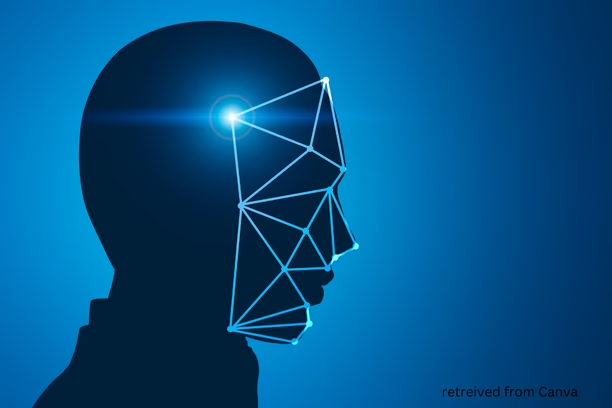Abstract
Facial recognition technology is rapidly being adopted by law enforcement agencies worldwide, including in India, to enhance criminal detection and surveillance. While it promises efficiency and accuracy in identifying suspects, its unchecked use raises grave concerns about privacy, misidentification, algorithmic bias, and a lack of legal safeguards. This article critically examines the dual nature of facial recognition systems how they aid in crime control but simultaneously threaten civil liberties. Drawing on global examples, Indian legal developments, and ethical frameworks, it calls for urgent regulation to balance technological advancement with constitutional rights.
1. Introduction: A World Where Your Face is the Password
Imagine walking through a market, unaware that a camera just scanned your face and matched it with a police database. You’ve committed no crime, yet you’re being watched not judged by your actions, but by your face. Welcome to the age of facial recognition policing a high-tech tool that’s rapidly changing how law enforcement works around the world.
As technology rapidly redefines crime detection, facial recognition systems (FRS) have emerged as one of the most powerful and controversial tools in law enforcement. From catching fugitives at airports to identifying suspects in real-time through CCTV feeds, these systems promise speed, efficiency, and precision. But behind the lens lies a web of legal, ethical, and constitutional dilemmas. FRS is among the fastest-growing tools in criminal detection worldwide. Law enforcement agencies praise its potential for identifying suspects quickly, solving cold cases, and enhancing public safety. However, this technological promise is shadowed by serious legal, ethical, and privacy concerns.
Globally, the market for biometric facial recognition is projected to grow from $3.8 billion in 2021 to $10.3 billion by 2027, (Markets and Markets Report) signaling rapid adoption by governments and private entities alike. India is no exception, with pilot programs and expanding databases fueling both optimism and concern.
Can we trust algorithms to accurately identify criminals without violating civil liberties? How do legal systems balance the benefits of FRT with the risks of mass surveillance and wrongful accusations? This article explores the rise of facial recognition in criminal justice, the technology behind it, its advantages and pitfalls, and the crucial questions it raises for law and society.
2. What is Facial Recognition Technology?
Facial Recognition Technology (FRT) is a form of biometric identification that uses software to map facial features from images or video. This “faceprint” is then compared against a database of known images such as mugshots of convicted criminals or government ID photos to find matches.
The process begins with image capture, where cameras or video feeds obtain facial images. Then, feature extraction algorithms analyze key points on the face, including the distance between the eyes, nose shape, and jawline contours. These measurements generate a unique face template, which is compared against stored templates in a database. The system then outputs a confidence score indicating the likelihood of a match.
Facial recognition is used in multiple ways. In real-time surveillance, cameras scan crowds in public places like airports and metro stations to detect wanted persons. In forensic analysis, police may analyze images or video after a crime to identify suspects. FRT is also used in access control for devices or secure facilities to grant or deny entry.
2.1 Use of Facial Recognition in Criminal Detection
Around the world, police departments and governments use FRT to identify suspects and wanted criminals quickly, locate missing persons, monitor large public events for security threats, and solve cold cases by matching old photos with new footage.
In the United States, the FBI uses facial recognition databases to identify suspects from crime scenes. In China, facial recognition forms part of a massive surveillance network, used extensively for crime control and social monitoring. In India, the Delhi Police and other State agencies have launched pilot projects using FRT to track criminals and maintain law and order.
3. Global Deployment in Criminal Detection: Trends & Figures
Countries are adopting facial recognition systems at varying scales and speeds. In the United States, the FBI’s facial recognition database reportedly contains over 641 million photos, including both criminal and non-criminal sources (Washington Post Report). In 2020 alone, the FBI conducted more than 30,000 facial recognition searches linked to criminal investigations.
China employs an estimated 200 million CCTV cameras with integrated FRT as part of its vast social surveillance framework. Reports indicate that the technology is used to monitor ethnic minorities such as the Uyghurs, raising significant human rights concerns.(MIT Technology Review).
India’s Delhi Police used facial recognition during the 2020 Republic Day protests, claiming the identification of over 2,000 suspects. The Maharashtra government has also announced plans for a state-wide facial recognition system integrated with police databases.
3. Legal and Ethical Concerns: The Dark Side of Surveillance
Despite its utility, facial recognition technology poses serious challenges concerning privacy, algorithmic bias, and the lack of adequate regulatory frameworks.
India lacks a comprehensive data protection Law, leaving citizens vulnerable. The Supreme Court’s Puttaswamy judgment (2017) guarantees the right to privacy but offers limited guidance on biometric surveillance limits.
Algorithmic bias and misidentification are significant concerns. Research by MIT and IBM found that commercial FRT systems falsely identified darker-skinned women at rates as high as 35%, compared to less than 1% for lighter-skinned men (Gender Shades Study). Wrongful arrests due to FRT misidentification have been documented in the U.S. and could disproportionately affect minorities in India as well. (ACLU Report).
Globally, regulatory responses vary. San Francisco banned the government’s use of facial recognition in 2019, (City Ordinance) and the European Union is considering a moratorium pending comprehensive legislation (European Parliament Report). In contrast, India’s pending Personal Data Protection Bill continues to await enactment, leaving critical gaps in consent, data retention, and auditability.
4. India’s Legal Landscape on Facial Recognition
India’s existing legal framework provides some protection for privacy but lacks specific regulations governing the use of facial recognition technology in law enforcement, creating a legal grey area.
The landmark Supreme Court ruling in Justice K.S. Puttaswamy v. Union of India (2017) declared the right to privacy a fundamental right under Article 21 of the Constitution. This includes protection from unauthorized collection and misuse of biometric data. The judgment mandates that any state intrusion into privacy must meet the tests of legality, necessity, and proportionality criteria facial recognition programs must fulfill to be constitutionally valid.
The Information Technology Act, 2000, and its Rules partly address digital data protection. Section 43A requires organizations to follow reasonable security practices, while Section 72A penalizes unlawful disclosure of personal information. The 2011 Rules classify biometric data as sensitive personal data. However, the law does not explicitly govern the use of FRT by law enforcement, resulting in regulatory ambiguity.
India’s proposed Personal Data Protection Bill, 2019, aims to introduce comprehensive safeguards, including consent requirements and data security obligations for biometric data collectors. It also establishes rights like correction, erasure, and data portability. Once enacted, it may offer a robust legal framework for governing FRT usage.
5. Impact on Civil Rights: Risks and Challenges of Facial Recognition
FRT, while enhancing law enforcement capabilities, poses significant threats to civil rights such as privacy, freedom of expression, and equality.
The technology enables mass surveillance by scanning faces in public without knowledge or consent, potentially violating the right to privacy recognized in Puttaswamy. This surveillance may deter free movement and discourage public protest or association.
Inaccurate identification especially for women and darker-skinned individuals can result in wrongful arrests and harassment, disproportionately affecting marginalized communities and reinforcing social inequality.(Gender Shades Study).
Lack of transparency and accountability further compounds the problem. Citizens are often unaware of when or how they are surveilled and cannot challenge misuse or errors. This lack of oversight threatens democratic governance.
Moreover, the chilling effect of constant surveillance may suppress free speech and assembly. In a democracy, fear of being watched can discourage participation in protests or political discourse, undermining civic engagement.
India’s lack of enforceable safeguards only deepens these concerns. Though the Personal Data Protection Bill, 2019, promises to address some gaps, the absence of enforceable laws continues to leave citizens exposed to unchecked surveillance.
6. Conclusion
Facial recognition technology stands at the intersection of innovation and ethics. Its role in enhancing crime detection and public safety is undeniable, but its unchecked deployment threatens to erode fundamental rights. While India’s constitutional jurisprudence, including the Puttaswamy judgment, provides a foundation for safeguarding privacy, more is needed. A robust legal framework, transparent policies, and independent oversight are essential to ensure that the use of facial recognition upholds democratic values and protects civil liberties.


Leave a Reply